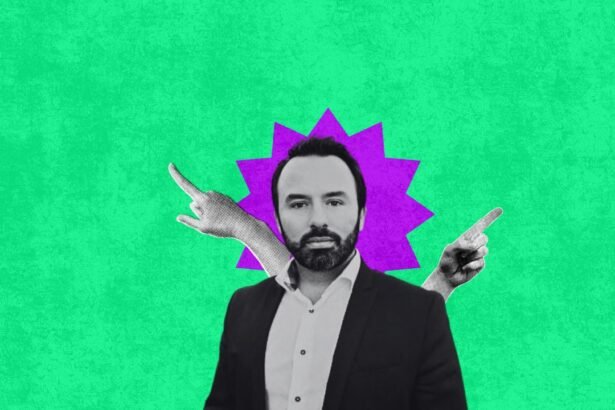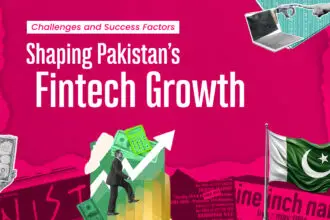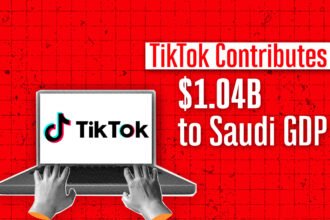Sky Kurtz, the co-founder and CEO of Pure Harvest Smart Farms (PHSF), is leading one of the MENA region’s most talked-about agri-tech companies. His goal is ambitious, to be world-class and the greatest in the region, using cutting-edge technology to solve MENA’s critical food security problems at scale. But this journey has been far from easy, marked by chaos, financial scares, and deep lessons about building asset-intensive businesses in harsh environments.
The Genesis – Living the Problem
Kurtz never intended to start an agri-tech business in the Middle East; it happened by accident because he was living there and “lived the problem”. He observed a stark deficiency in fresh produce: options were either low-quality, seasonal, and imported, or extremely high-quality but prohibitively costly due to air freight. He recalls strawberries feeling like a “status symbol” because they were so unaffordable, a stark contrast to his life in California where fresh produce was a daily staple. This lack of available, quality food affected the quality of life, prompting him to obsess over the “why” that eventually led to Pure Harvest.
Kurtz connected with his co-founder, Robert Koopstus, who was investigating water-saving solutions for the Middle East. They quickly realized that food security and water conservation were intrinsically linked: over two-thirds of the region’s fresh water is used in food production, yet agriculture generates less than 1% of the GDP and supplies less than 15% of the food. Kurtz deemed this usage of a critical resource “criminal”.
The Middle East was chosen strategically, not only because of the immediate problem but due to two powerful, long-term trends:
1. Demographics – By 2100, 80% of the world’s population is estimated to be within a 12 to 13-hour flight of Abu Dhabi, driven by growing populations in South Asia, the Middle East, and Africa.
2. Climate Change – The region, experiencing extreme heat, humidity, and drought, is considered the “endgame of climate change”. The founders believed that if an economic solution could be proven in one of the world’s harshest environments, they could export that technology and solution globally.
Building the Impossible – Strategy and Chaos
Moving from a career as a private equity investor to a founder meant Kurtz had a unique perspective, allowing him to anticipate investor critiques and prepare meticulously. His transition was driven by a desire for purpose and escaping the “golden handcuffs” of his previous success.
The initial product choice—tomatoes—was “quite surgical”:
• Market Size: Tomatoes are the largest segment of the fruit and vegetable market in the region, providing necessary proof of concept for the mass market, not just a niche premium category.
• Quality Proof: Tomatoes offer easily discernible quality cues (color, symmetry, aroma) for both consumers and technical experts.
• Year-Round Consistency: Unlike leafy greens, a tomato plant must thrive for 52 weeks after the initial harvest period, providing investors with undeniable proof that PHSF could control the climate consistently and economically across an entire year.
Kurtz followed a strategy of “fail small and win big,” designing a micro proof-of-concept that minimized capital need while being large enough to prove product-market fit. He approached investors with a grueling level of detail, preparing entire data rooms dedicated to disproving every objection to the thesis.
Despite this careful planning, the initial launch was chaotic. Their projections were dramatically exceeded; they hit nearly 90 kilograms per square meter of trust tomatoes in the first year, far surpassing the modeled 68 kg. This “bumper harvest” led to a near-bankruptcy scenario. They lacked the capital for packaging, temporary labor, fertilizers, and trucks. Kurtz had to inject hundreds of thousands of dollars of his own liquid net worth, begging, borrowing, and stealing bridge capital just three weeks after the farm opened.
This frightening experience taught him a crucial lesson: the importance of planning for upside risk. Investors typically focus on downside scenarios and stress tests. Kurtz now espouses the Rule of 40: planning a business and its capitalization to survive both underperforming by 40% and outperforming by 40%, because “you can grow yourself into bankruptcy too”.
Navigating MENA’s Investment and Market Challenges
Pure Harvest operates in a highly complex and asset-intensive sector. The minimum efficient scale (MES) for this industry is extremely high, requiring $50 million to $100 million in initial capital and three to five years of operational losses, which explains why barriers to entry are so significant and why many competitors have struggled or failed. PHSF has had to execute 13 total capital raises to date, utilizing debt, equity, grants, and project finance.
The capital landscape is further complicated by macro factors and regional dynamics:
- Hype and Bad Actors: The controlled environment agriculture (CEA) sector suffered from a hype cycle fueled by companies that made huge, audacious promises based on unproven technology like the fictional “Moore’s law of LEDs”. High-profile vertical farming companies like App Harvest and AeroFarms, valued in the billions, went bankrupt. Kurtz finds he spends half his time explaining why PHSF—which utilizes a hybrid farm model (embedding vertical farms for sensitive crops within solar-powered high-tech greenhouses)—is fundamentally different and economically viable.
- Market Competition: PHSF faces inflationary costs (rising steel, glass, and copper prices), alongside deflationary pressure on product prices due to the region’s open market policies and competition, such as significant produce imports from Iran.
- Late-Stage Capital Access: The funding ecosystem for growth-stage companies (Series B to E) is thin. Sovereign Wealth Funds (SWFs) often have complex mandates and may hesitate to invest directly in a domestic agri-tech company, fearing it will crowd out thousands of smaller local farmers. Furthermore, PHSF faces indirect competition from parastatal actors (like ADQ or Salol) who may build competing infrastructure after PHSF has taken the initial market risk. Consequently, PHSF has had to raise over 80% of its capital from outside the region.
- Cultural Sensitivity: As an outsider, Kurtz admitted his biggest disadvantage was not initially appreciating the necessity of relationship building and patience, especially in markets like Saudi. He learned that attempting to rush the deal can extend the process or result in terms that reflect a lack of trust.
What Was The Learning around Cost and Expansion
To ensure economic efficiency and survive the capital crunch, PHSF employs profound business discipline.
Firstly, they only grow high-value, water-intensive, perishable goods where quality is discernible (e.g., tomatoes, strawberries, leafy greens), steering clear of staples like rice or corn whose embedded water footprint makes them unsustainable to grow locally. This strategy ensures their cost/quality curve is “strictly dominant” against air-freighted imports.
Secondly, when capital fundraising slowed, PHSF pivoted to highly capital-efficient revenue streams:
• Value-Added Products: They launched a line of sauces and preserves (like a strawberry, date, cardamom, and cinnamon jam). This utilizes their high-quality “off-spec” (ugly) produce that wouldn’t sell at retail prices, transforming low-value waste into high-value, shelf-stable goods. This launch was managed in partnership with food manufacturers, requiring minimal capital expenditure.
• Pure Harvest Selections (PHS): PHS acts like a fair-trade certified sourcing arm. It leverages PHSF’s brand, market access, and agronomical knowledge to vet and partner with regional and international farms (e.g., Morocco, Jordan, Kenya). PHS supports these farmers in improving methods and ensures they are paid fairly and quickly (within 15-30 days), solving a historical predatory practice in the region. This generates additional revenue over PHSF’s fixed cost structure.
• Technology Commercialization: Eventually, PHSF plans to commercialize proprietary technologies developed internally, such as AI-powered yield forecasting models and low-cost robotic scouting solutions.
These diversified, highly synergistic business lines (tech, manufacturing, construction, FMCG, and regulatory lobbying) create differentiation and value, reducing the monopsonistic power of large retailers and shielding the company from being easily replicated by a sole tomato producer.
What is in it for MENA Entrepreneurs ?
Sky Kurtz’s journey offers crucial advice for founders navigating the high-growth MENA startup environment:
1. Prioritize Team Over Solo Ambition: Avoid running a business as a “soul-founder.” It is a lonely and dangerous path. Organizations are built by teams. If you lack the necessary credibility or experience, bring in co-founders or seasoned advisors who can lend their reputation and counsel, even if it means giving away a few percent of the company.
2. Embrace Financial Discipline and the “Rule of 40”: Don’t focus exclusively on downside risks; plan for success and failure. Utilize the Rule of 40 to ensure your capitalization can absorb significant fluctuations in time and performance.
3. Be Transparent with Investors: Investors should be treated as allies and partners, not adversaries. Share information—good, bad, and ugly—early and often. Hiding problems leads to shareholder suspicion and prevents them from assisting in a crisis. Furthermore, actively ask investors for help in specific areas (e.g., hiring, networking).
4. Practice Valuation Discipline: Do not be swept up in market hype or chase the highest valuation. An overvalued business creates crippling expectations and sets the company up for painful down rounds and anti-dilution consequences later. A reasonable, fair valuation is always better than a high, risky one.
5. Focus on Sustainable Exits: Given the size of the regional market (around 330-350 million people in broader MENA), entrepreneurs should aim for “doubles and triples”—successful, profitable exits in the $50 million to $350 million range—rather than perpetually swinging for rare, multi-billion dollar “unicorn” home runs. Building a consistent success record excites the ecosystem and enables future founders to take bigger risks.
6. Invest in Relationships and Trust: Understand the regional emphasis on trust. Be patient and make the investment in personal relationships early on, rather than rushing to a transactional deal. A strong foundation of trust affects the quality and speed of negotiations later.
Consider this reality – The MENA region possesses vast pools of capital, yet why is the path to funding growth-stage (Series B through E) capital so perilous for critical sectors like agri-tech? The sector highlights a severe structural problem: the capital available is often mismatched to the needs of asset-intensive businesses. While sovereign wealth funds (SWFs) hold billions, their mandates often discourage direct investment in domestic agri-tech, fearing they will crowd out thousands of smaller local farmers, or preferring to invest their capital in overseas diversification. This hesitation, combined with the emergence of parastatal actors (state-backed competitors) who may replicate successful models after the initial market risk is taken, creates a challenging narrative for international investors, forcing pioneers to secure the majority of their growth capital from outside the region. Furthermore, the global failure of high-profile vertical farming companies, fueled by irrational hype, has unjustly cast a long shadow, pushing the entire sector into a “trough of disillusionment” where legitimate, profitable MENA companies struggle against the “baby with the bathwater” phenomenon.
For the MENA startup ecosystem to truly mature, a cultural shift in expectations and risk management is necessary. Given the regional market size (around 330–350 million people), the collective obsession with achieving rare “unicorn” status (billion-dollar valuations) often leads to over-valuation, painful down rounds, and crippling expectations that few companies can meet. Instead, the ecosystem’s health relies on building a consistent track record of successful, profitable “doubles and triples”—companies exiting in the $50 million to $350 million range. Crucially, founders must abandon the regional culture defined by the “fear of shame”. By hiding operational failures or problems from investors until they become crises, founders fracture the trust necessary for a robust ecosystem. Adopting radical transparency, where management treats investors as partners rather than adversaries, is the definitive action required to convert regional wealth into reliable, long-term ecosystem growth




